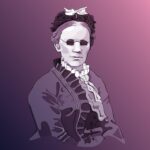Have you ever watched A Charlie Brown Christmas? Do you remember when Linus recites the story of Jesus’ birth beginning with, “And there were in the same country shepherds abiding in the field, keeping watch over their flock by night.” (Luke 2:8 KJV). Linus’s famous line actually comes from the book of Luke. Along with this wonderful description of Jesus’ birth announcement, we are indebted to Luke for giving us many of the most-treasured details about Jesus’ life.
Luke’s Gospel is part one of a two-part history. The second part is the book of Acts which picks up just after Jesus’ resurrection and describes the growth of the Christian church. Matthew, Mark, Luke, and John all recorded the story of Jesus, but Luke was the detail guy. He collected testimonies and eyewitness statements. Then he studied these pieces and put them into an “orderly account” for a Roman dignitary named Theophilus. Luke’s purpose was clear. He wrote so that Theophilus (and all future readers) could have “certainty” about what they were hearing and being taught (Luke 1:1-4).
Luke was suited to his task. He was a doctor (Colossians 4:14), so he was well-educated and probably trained to observe details closely. He was also one of the Apostle Paul’s traveling companions, mentioned by name in several of Paul’s letters (Colossians 4:14, 2 Timothy 4:11, Philemon 1:24). Luke’s learning and experience gave him the ability and the opportunity to write a trustworthy record of the most important events in history.
Each of the gospel writers helps us understand Jesus from a slightly different angle.
Luke emphasizes that Jesus came for people from all ethnic backgrounds and that he especially had compassion for those who are poor and needy. Both Matthew and Luke provide genealogies for Jesus, but Luke’s genealogy doesn’t begin with Abraham, the father of the Jewish people. He traces Jesus’ heritage all the way to Adam, the father of all people (Luke 3:23-38). Only Luke tells us that Jesus was thrown out of his home synagogue when he reminded the congregation that Elijah and Elisha performed their most famous miracles for foreigners (Luke 4:22-30). Luke wants his readers to understand that Jesus is the Savior for all people who will place their faith in him.
Finally, Luke teaches that it is those who know they are sinners who find refuge in Jesus. In that same hometown sermon, Jesus read from the scroll of Isaiah, “The Spirit of the Lord is upon me, because he has anointed me to proclaim good news to the poor. He has sent me to proclaim liberty to the captives and recovering of sight to the blind…” (Luke 4:18-19 ESV). Jesus brought freedom and healing and spiritual sight by calling sinners to repentance (Luke 5:32; Matthew 4:17; Mark 1:15) and saving those who trust in him.
Luke is the only writer who records the story of the thief on the cross admitting his sin and looking to Jesus for salvation (Luke 23:39-43). This detail is important to Luke who wants his readers to know that Jesus came for sinners like us.
Luke wants his readers to sing with Mary, “he has filled the hungry with good things” (Luke 1:53) and with Zechariah, “the sunrise shall visit us from on high to give light to those who sit in darkness” (Luke 1:78-79). He wants us to celebrate Jesus’ story with certainty that these events really happened and that the accounts are true. Perhaps our reenacting the story from Luke every Christmas would give Luke great satisfaction. The Holy Spirit wrote this gospel through Luke so that we might rejoice confidently in our Savior!
Do you know what Jesus has done for sinners? Open the book of Luke to find out.





